One group of birds that never ceases to amaze me is the woodpeckers. There are a variety of woodpeckers found in the States, but they all share one main feature—incredibly strong bills that are used to chisel wood and create cavities for nesting.
If you’re intrigued by these drumming birds, keep reading. I’ll give you a brief description of the wide variety of birds that fall under this category.
23 Types of Woodpeckers
There are around twenty-three woodpecker types here, and they vary greatly. Given the diversity in this family of birds, it can be tough for bird watchers to tell them apart.
Here are the features of the most common woodpeckers I’ve seen.
Arizona Woodpecker

Standing out with its brown back and speckled chest, the Arizona Woodpecker breaks the mold of its black-and-white North American kin.
This pint-sized woodpecker, measuring just 7-8 inches long, calls the mid-elevation pine-oak forests of southern Arizona and New Mexico home.
Unlike larger woodpeckers that excavate extensively, they forage by flitting to the base of a tree and spiraling upwards. I’ve seen them meticulously examining the bark for hidden treats.
Acorn Woodpecker
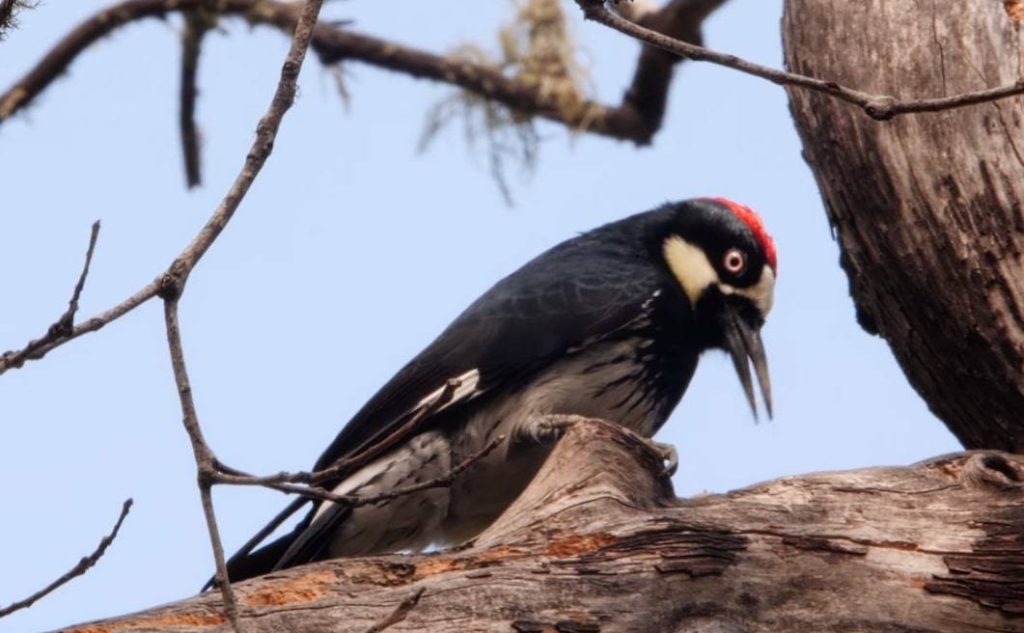
This comical-faced bird with a red cap and black back is a cooperative hoarder. These robin-sized (7.5-9.1 inches) birds live in groups, gathering and storing acorns in granaries they create in dead trees or even telephone poles.
Acorn Woodpeckers are acrobatic climbers, using their stiff tails for support as they explore trunks for insects or stash their bounty. While tolerant of humans, their dependence on oak woodlands limits their range.
Listen for their loud “waka-waka” calls as you explore oak forests in the Southwestern and West Coast US.
American Three-toed Woodpecker
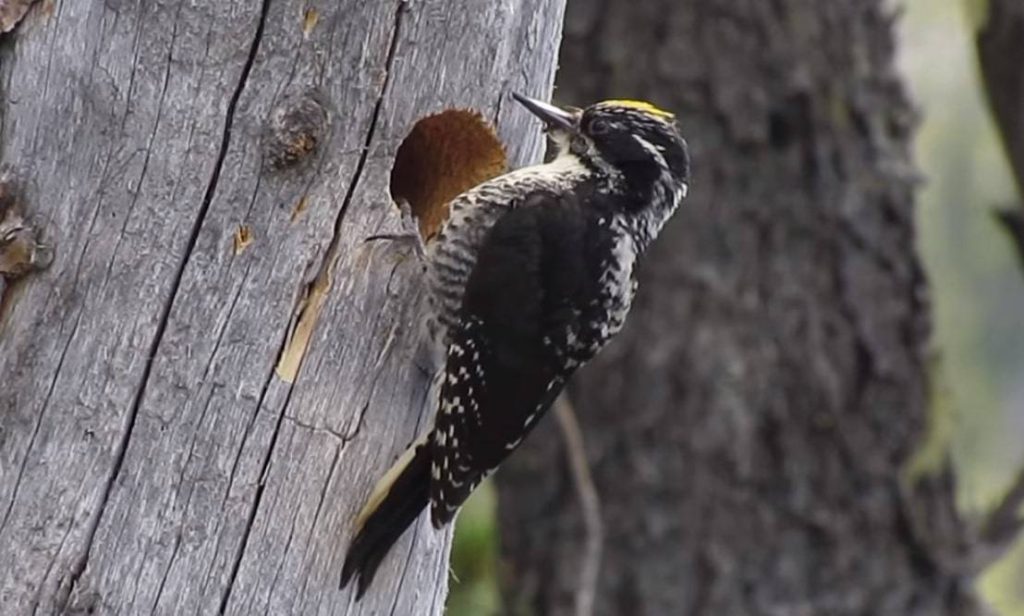
Here’s a robin-sized (8.3-inch) black-and-white bird with a barred back. I believe it prefers disturbed coniferous forests. Unlike most woodpeckers, it has only 3 toes. Males sport a yellow crown patch.
Look for them chipping away at bark for insects or excavating nest holes in dead trees. Their loud calls and drumming can be heard in spring and early summer.
Black-backed Woodpecker

The Black-backed Woodpecker is a robin-sized (9.1-inch) bird with a solid black back and white underparts. It thrives in burned forests feasting on beetle larvae. The bird only has 3 toes, like the American three-toed I’ve mentioned above.
Males boast a yellow crown patch. Look for them methodically examining dead trees, especially those blackened by fire. Their strong bill allows them to dig deep for hidden insects.
Downy Woodpecker
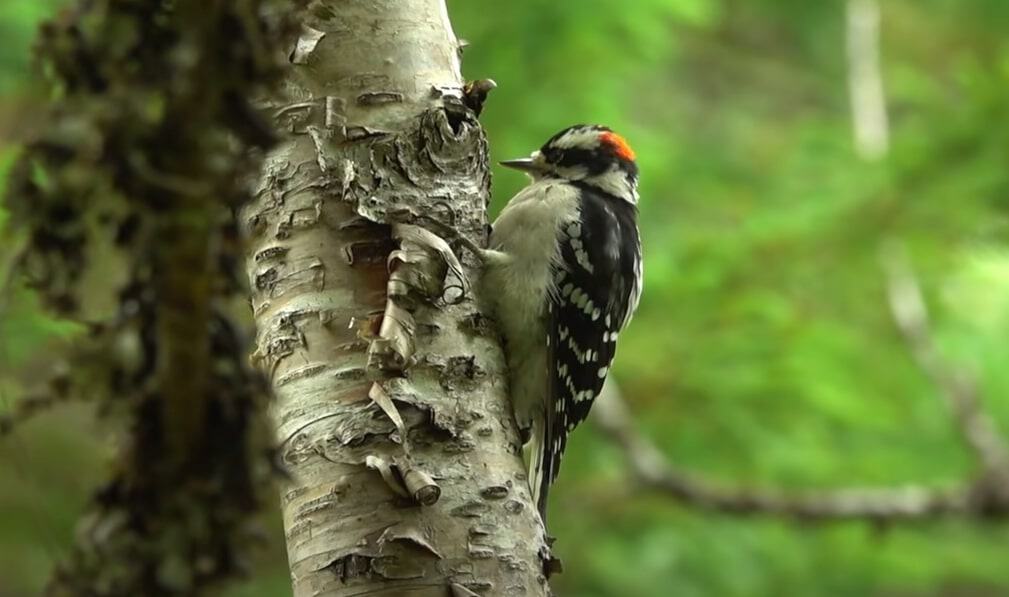
A tiny acrobat among woodpeckers, this black-and-white bird thrives in woodlands, parks, and even backyards. Often seen alongside chickadees and nuthatches, its small size might fool you.
Look for it balancing on slender branches or feeders, meticulously searching for insects. This woodpecker species drumming isn’t for food, but a way to communicate and defend its territory. In winter, you might find them in mixed flocks, with males and females strategically feeding in different areas.
Gilded Flicker
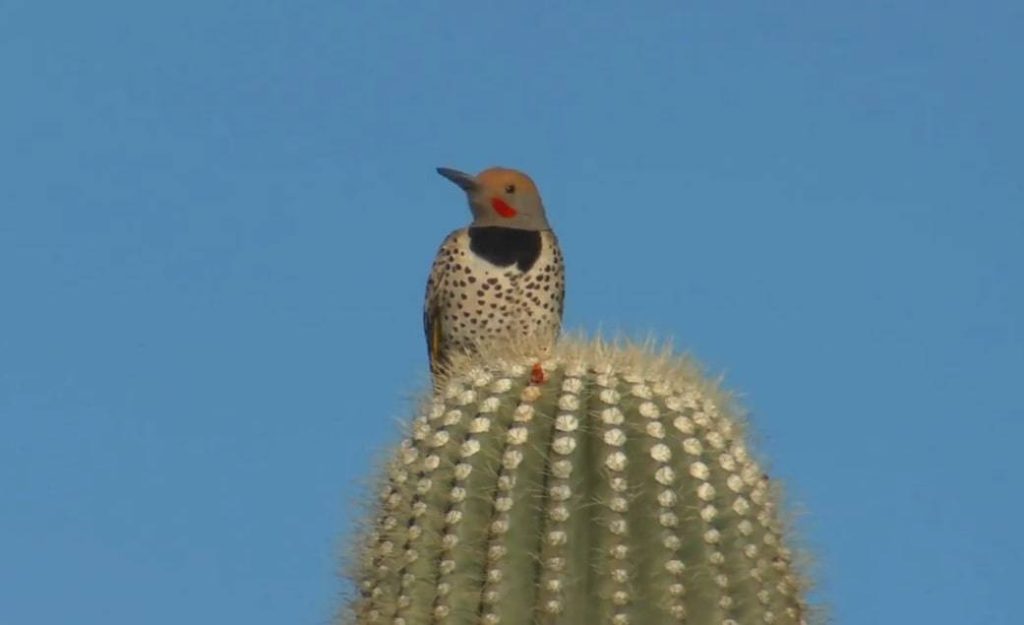
A dazzling resident of the cactus forests, the Gilded Flicker (about 11 inches long) is a woodpecker that stands out from its cousin, the Northern Flicker.
While both flickers are larger than robins, the Gilded Flicker reveals a flash of bright yellow under its wings when it takes flight, compared to the red underwings of the Northern Flicker.
This desert bird uses its long, specially adapted tongue to snatch ants from the ground, a vital part of its diet.
Keep an eye out for these flickers nesting in the towering saguaro cacti, where they excavate cavities high above the ground.
Gila Woodpecker
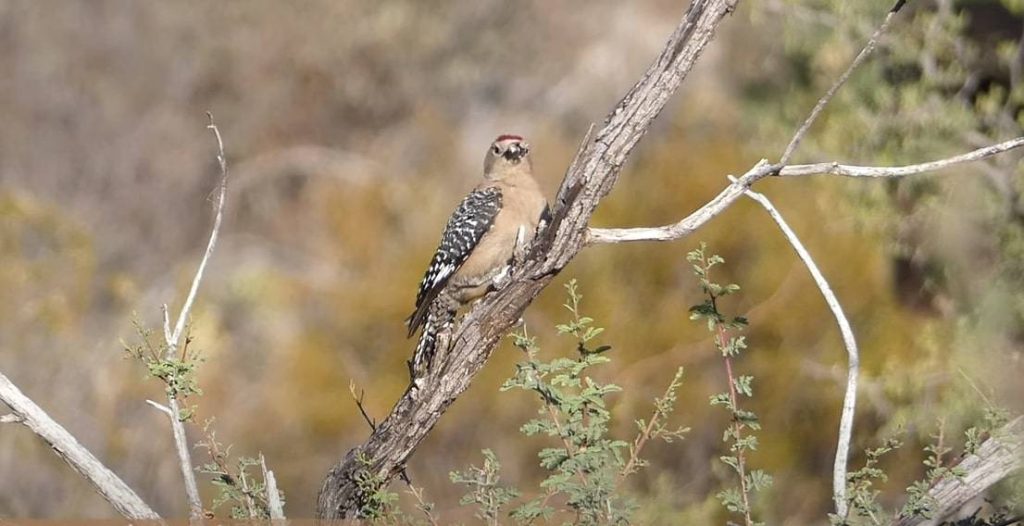
At 8-10 inches (20-25 cm) long, the Gila woodpecker is a medium-sized woodpecker that stands out in the desert with its striking black and white barred back and wings.
Unlike its cousin, it flashes bright yellow under its wings during flight. Look for this 8-to-10-inch (20-to-25-centimeter) bird drumming on saguaro cacti, where it excavates cavities for its nest.
Golden-fronted Woodpecker

The Golden-fronted Woodpecker is a vibrant resident of dry brushlands and woodlands. At 8.7 to 10 inches (22 to 26 cm) tall, this medium-sized woodpecker boasts a barred black and white back with a white rump.
Males have a striking red crown and a golden yellow nape, while females substitute the red with a grayish crown. A diagnostic feature is the yellow patch on their lower belly.
Hairy Woodpecker
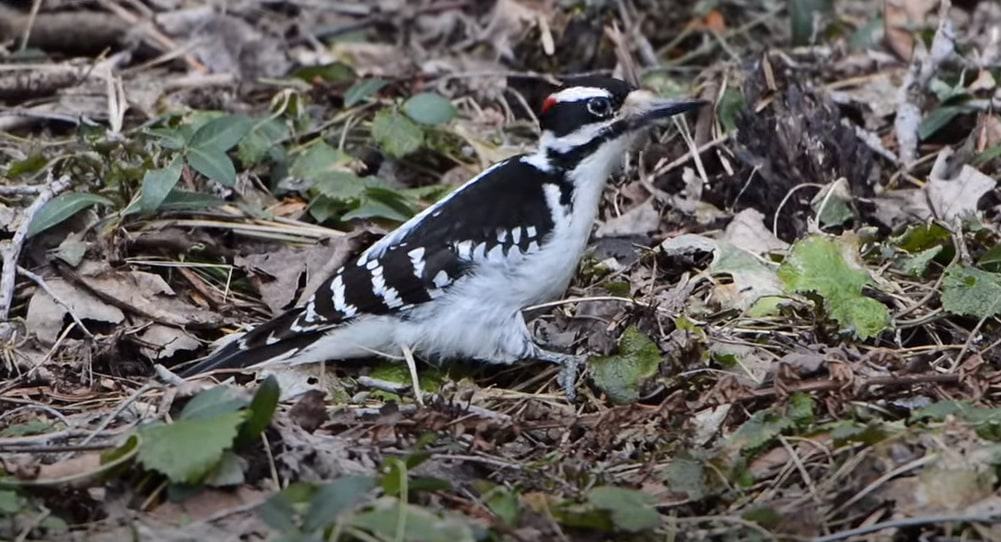
A large woodpecker at 9 inches (23 cm) tall, the Hairy Woodpecker frequents forests and woodlands. Its black and white barred back and wings make it a striking sight.
Look for a white patch on the outer tail feathers and a long, strong bill for excavating insects from trees. This woodpecker can be confused with the Downy Woodpecker, but I find the Hairy Woodpecker’s larger size and longer bill are key differences.
Ivory-billed Woodpecker
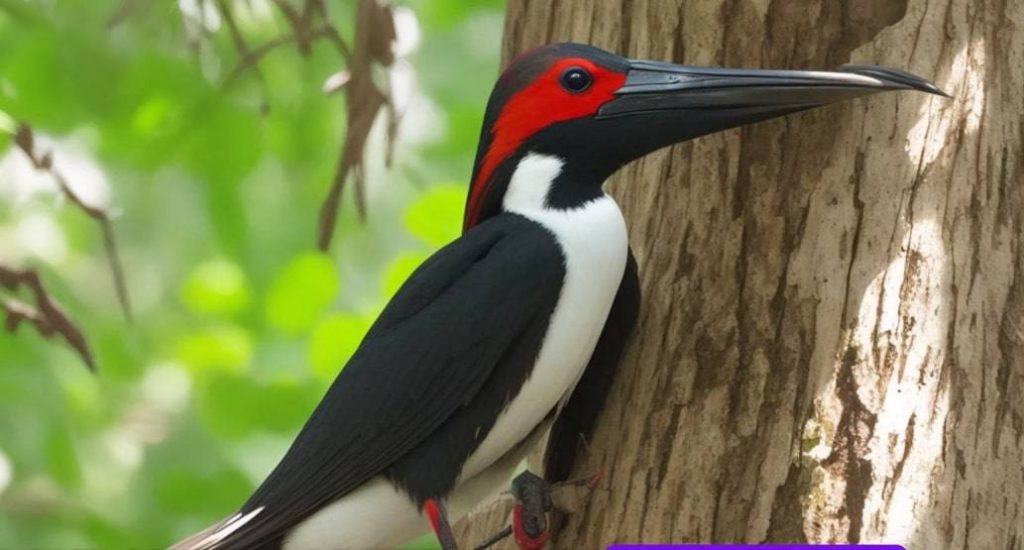
The elusive Ivory-billed Woodpecker shrouded in mystery, was once a giant among its kind. At a majestic 19-20 inches (48-51 cm) tall, its black body gleamed with a bold white stripe down its back and wings.
Males sported a bright red crest, adding to their regal appearance. Sadly, sightings are incredibly rare, with their existence in the wild debated.
Ladder-backed Woodpecker
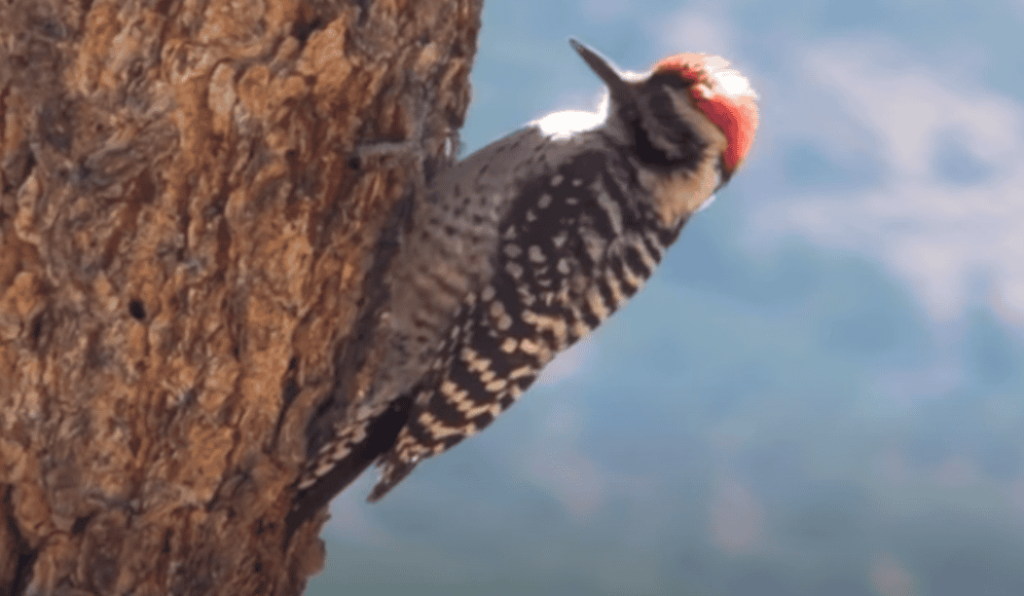
The Ladder-backed Woodpecker, a small climber at 6.5 to 7.5 inches (16.5 to 19 cm) tall, thrives in arid habitats. Its name comes from the neat black and white stripes resembling a ladder running down its back.
Unlike some woodpeckers, both males and females have a red patch on their heads, with the males being larger and brighter.
Lewis’s Woodpecker

The Lewis’s Woodpecker, a chunky and colorful bird, stands out in open forests at 10.5-11.5 inches (27-29 cm) tall. Its black and green back contrasts with a bright red face, pinkish belly, and gray collar. This unique woodpecker forages like a flycatcher, snatching insects in mid-air, rather than drumming on trees.
Nuttall’s Woodpecker

A petite woodpecker at 6.5-7 inches (16.5-17.8 cm) tall, Nuttall’s woodpecker prefers oak woodlands. Black and white stripes run horizontally across its back, with a solid black patch on the upper back. Both sexes have two narrow white stripes across their cheeks. You can spot the males from a hidden red patch on the back of their heads.
Northern Flicker

This flicker, a medium-sized woodpecker at 12-13 inches (30-33 cm) tall, frequents woodlands, fields, and even backyards. Its brown-speckled back contrasts with a black bib and a white rump.
Look for a flash of red on the rump in flight and listen for their loud drumming and piercing calls. Northern Flickers are unique for spending a significant amount of time foraging on the ground for ants and beetles.
Pileated Woodpecker
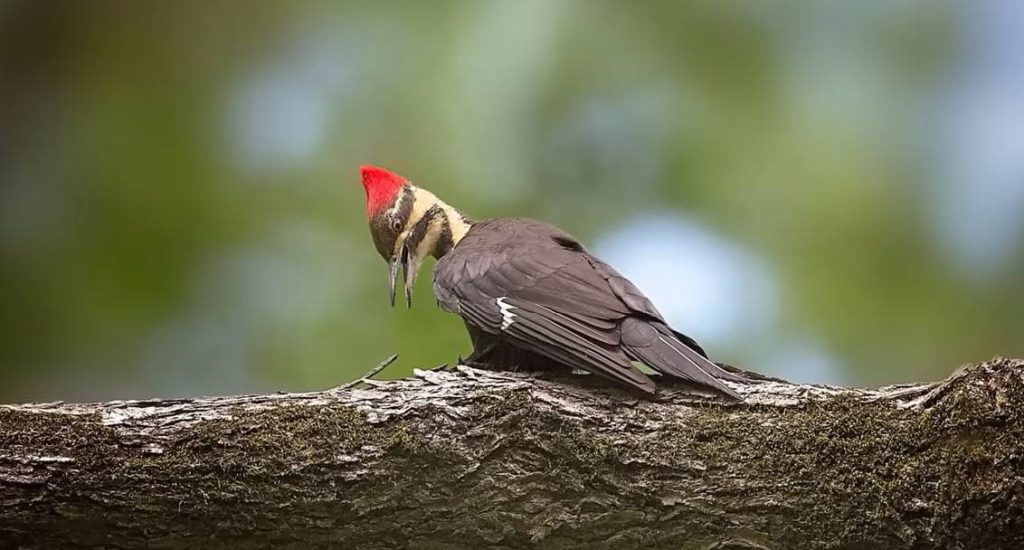
A true giant among woodpeckers, the Pileated Woodpecker stands tall at 16-19 inches (41-48 cm). Its impressive size and bold black and white plumage make it unmistakable.
Look for a bright red crest on the head and white stripes running down the sides of its black body. This powerful woodpecker uses its strong bill to excavate large holes in trees in search of insects and grubs.
Red-breasted Sapsucker
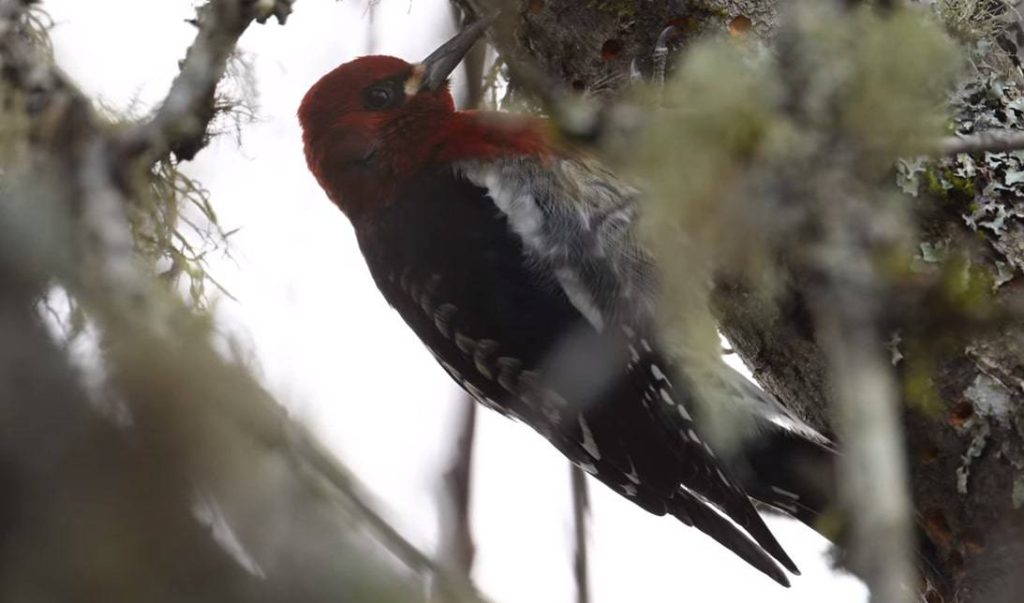
This medium woodpecker (8-9 inches tall) sports a red head, breast, and white belly. Black and white bars cover its back and wings, with a large white patch visible on the folded wing.
Unlike most of the different types of woodpeckers, they drill rows of shallow holes in trees to feed on the sap, attracting other insect-eating birds.
Red-headed Woodpecker
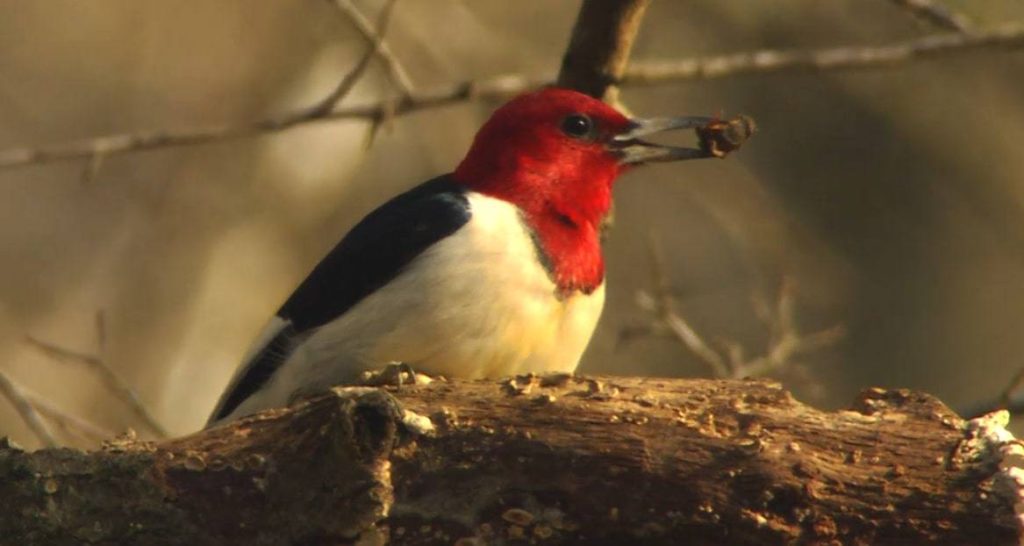
A striking bird at 7.5-9 inches tall, the Red-headed Woodpecker boasts a bright red head, belly, and wings. Black contrasts sharply on its back and tail. Their strong, chisel-like bill allows them to excavate insects from trees and readily eat fruits and nuts.
Sadly, their populations have declined significantly in recent decades.
Red-bellied Woodpecker

This medium woodpecker (9 inches tall) can be confused with its name. While red patches are present on the head and nape, they’re often hidden.
Look for a black back with white barring, a white belly with black streaks, and a white rump. They readily visit feeders for suet and seeds, making them backyard favorites.
Red-cockaded Woodpecker
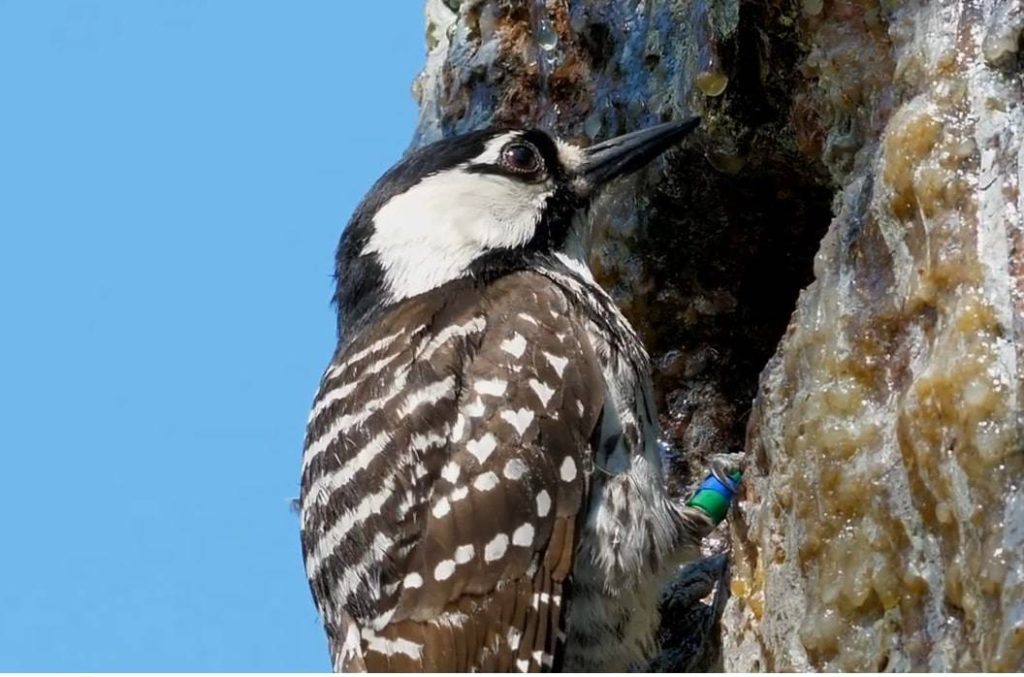
This southeastern woodpecker (8 inches tall) depends on open pine forests. Black and white bars cover its back, with males sporting a tiny red patch on the head (often unseen).
They create cavities in living pines with heartwood rot, attracting a special type of beetle they eat. Their dependence on specific habitats makes them a federally endangered species.
Red-naped Sapsucker
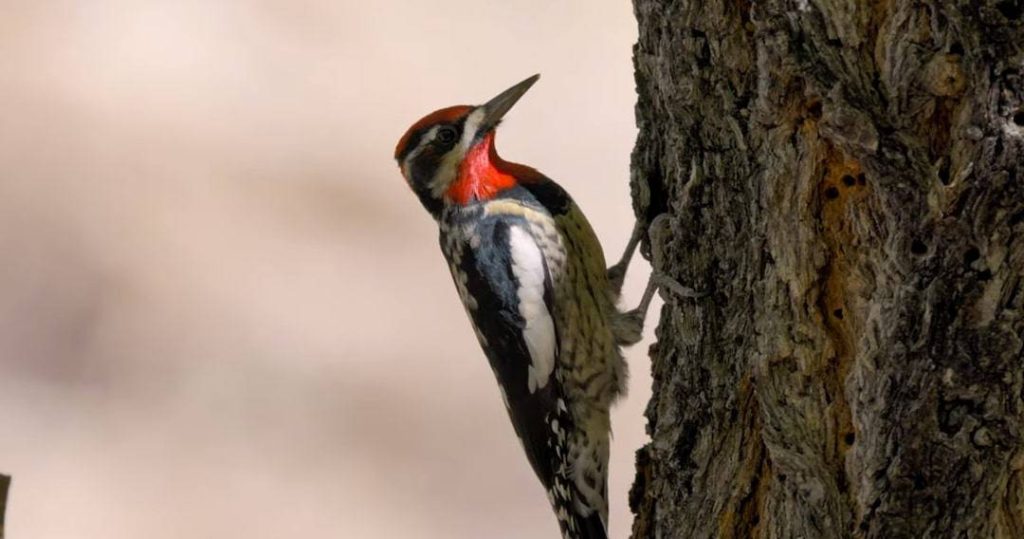
At 8-to-9 inches (20-to-23 centimeters) long, the Red-naped Sapsucker is a sharp dresser in the woodpecker world. Black and white bars cover its back with a white belly.
Look for the diagnostic red patch on the nape, which can be easy to miss. Unlike the Yellow-bellied Sapsucker in the East, it lacks a large white wing patch.
These industrious birds drill rows of holes in aspen, birch, and willow trees to feed on the sugary sap. Their harsh wailing cries and stuttering drums are good clues to their presence.
Williamson’s Sapsucker
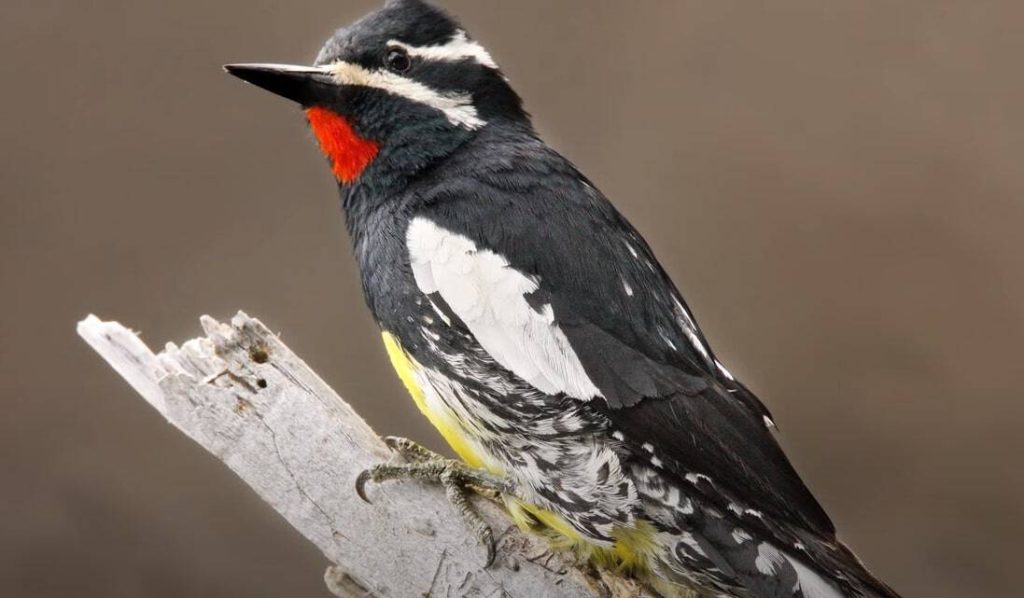
A medium woodpecker (8.5-9.5 inches tall), Williamson’s sapsucker frequents pine forests in western North America.
Black and white bars cover its back, with a yellow throat and breast diagnostic for males. Females have a white breast with some streaking.
Like other sapsuckers, these are the kinds of woodpeckers that drill rows of holes in trees to feed on sap and attract insects.
White-headed Woodpecker
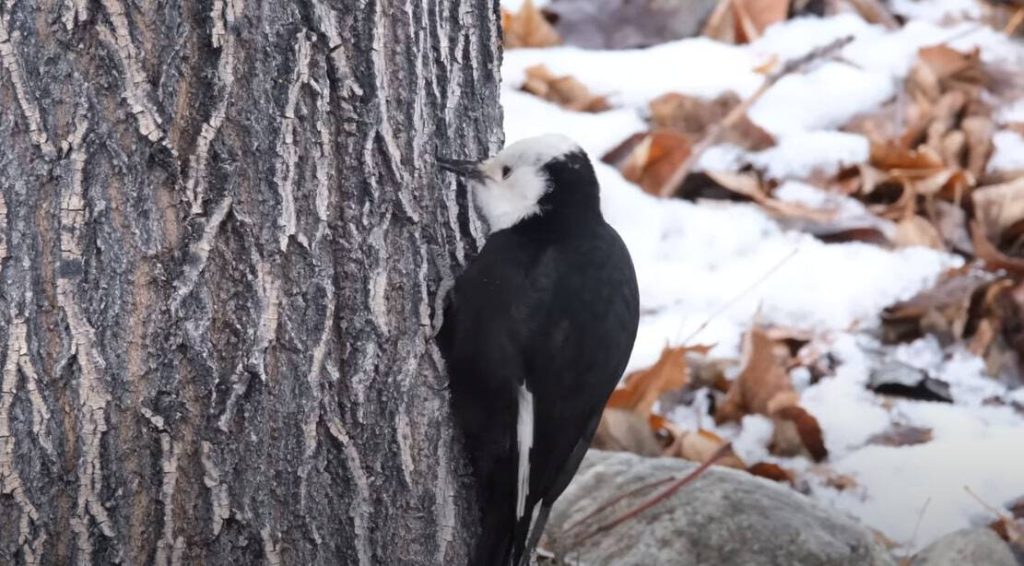
This large woodpecker (17-20 inches tall) inhabits mountainous forests of the west. Its striking appearance features a white head and neck contrasting with a black back and wings. A prominent red patch adorns the male’s forehead, while females have a black crown.
The bird’s powerful bill allows them to excavate large cavities in trees for nesting and feeding on insects and grubs.
Yellow-bellied Sapsucker

Yellow-bellied Sapsuckers drill rows of shallow holes in trees to feed on the sap, attracting other insect-eating birds. Unlike the Red-breasted Sapsucker, they lack the large white wing patch.
Final Thoughts
Now that we’ve gone over twenty-three of the most important woodpecker types, you should be able to spot them more easily when bird watching. They are such a diverse species that exploring them is a fascinating subject all on its own.

